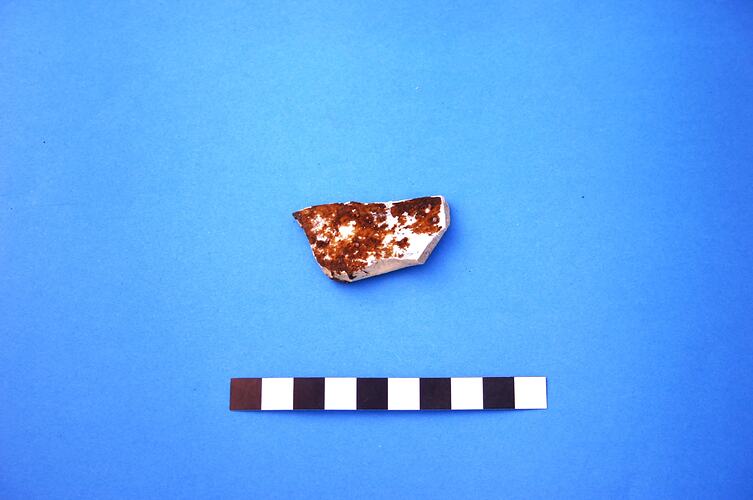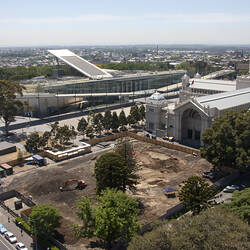Physical Description
One fragment of earthenware plate base. Transfer print is blue 'Asiatic Pheasants', popular in the second half of the 19th century and into Edwardian times.
Physical Description
One fragment of earthenware plate base. Transfer print is blue 'Asiatic Pheasants', popular in the second half of the 19th century and into Edwardian times.
More Information
-
Collection Names
-
Collecting Areas
Public Life & Institutions, Historical Archaeology, Royal Exhibition Building
-
Acquisition Information
Transfer from Godden Mackay Logan Heritage Consultants (GML), Department of Archaeology, La Trobe University, Australia Gallery, History & Technology Department, Museum Victoria, 20 Nov 2009
-
Manufacture Date
-
Context Number
G11/4/8/006
-
Site
Australia, Victoria, Melbourne, Royal Exhibition Building Western Forecourt
-
Distinguishing Marks
Wild Rose was superseded by Asiatic Pheasants in the 1850s and was one of the cheapest transfer printed patterns available in the 19th century. Asiatic Pheasants was made by at least sixty factories over a period of about forty years and, behind Willow, was the most popular pattern in the second half of the 19th century and into Edwardian times. It became a standard pattern produced on inexpensive wares.
-
Activity
-
Specific Activity
-
Decoration
-
Colour
Blue
-
Classification
-
Category
-
Discipline
-
Type of item
-
References
Klose and Malan 2000: 55; Coysh and Henrywood 1982: 29, Potter 1998: 8
[Article - Journal] Klose, J & Malan, A. The Ceramic Signature of the Cape in the Nineteenth Century, with Particular Reference to the Tenant Street Site, Cape Town. The South African Archaeological Bulletin. 55: 49-59., 2000, 55 Pages
[Book] Coysh, Arthur W. & Henrywood, R K. 1982. The Dictionary of Blue and White Printed Pottery 1780-1880. I., 1982, 29 Pages
[Chapter] Potter, J. Introduction, in Roberts, Gaye B. True Blue: Transfer Printed Earthenware. 7-10., 1998, 8 Pages
-
Keywords
Archaeology, Eating & Dining, Royal Exhibition Building, World Heritage

